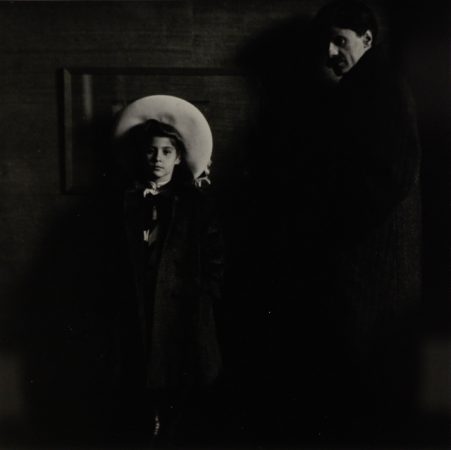
Edward Steichen began his interest in art by drawing and painting as teenager, but an early fascination with photography led him to his extraordinarily successful career; one of the very first acclaimed photographic “artists”. He made masterful early photographs combining a pictorial painter’s sensibility by handcrafting multilayered gum bichromate and platinum/palladium prints of astonishing beauty and timelessness. In route to Paris from Milwaukee at age 21 to further his painting studies, he made a wise stop in New York to meet “art” photography’s top tastemaker, Alfred Steiglitz, who immediately purchased three of his prints. This was an auspicious beginning to a rich, long lasting, collaborative association. Due to his great success as a photographer, even early on, Steichen employed a series of skillful photographic print makers responsible for production of his photographic prints.
Upon returning from Paris, Steichen set up a portrait studio at 291 Fifth Avenue. In a space that he later redesigned for Alfred Steiglitz as the celebrated and influential Gallery “291”, it became renowned for simultaneously exhibiting the work of finest art photographers alongside the painters and sculptors of the European avant garde recommended by Steichen. Among the select group of artists who made their US debut at Gallery 291 were Picasso, Matisse, Rodin and Brancusi (all at the time unknown in America). By deliberately exhibiting the finest new painting and sculpture along with the best art photography, Gallery 291 gave the new art photography medium equal importance and stature that it had not previously known.
In 1902, Stieglitz, with Steichen as a founding member, formed a loosely knit group of photographers called the Photo-Secession, that he promoted, exhibited and published for fourteen years in his new luxe art journal, Camera Work. Through its legendary run, both Steichen’s photography and painting were regularly featured in nearly a third of its fifty issues and in seventy gravures including the 1906 “Special Steichen Supplement” and the Steichen-only double issue of 1913; no other artist appeared as frequently or prominently in Camera Work.
Steichen’s reputation as the seminal fashion and celebrity photographer is largely due to his decade and a half spent at the Condé Nast publications Vogue and Vanity Fair beginning in 1923. Steichen closed his New York studio in 1938 and embarked upon a new, more spontaneous photographic phase. During WWII, he joined the Navy to head up a unit of photographers. He won an Academy Award in 1945 for his documentary about the Pacific naval war, The Fighting Lady. Two years later, he was appointed the director of photography at MOMA in NYC . In 1955, he put together “The Family of Man”, a groundbreaking 500 photo exhibition that traveled the world. It was seen by more than 9 million people with more than 4 million books sold; it’s been permanently displayed in Luxembourg, the country of his birth, since 1994.
Edward Steichen and George Tice first met as a result of the 1959 Tice photograph, “Explosion Aboard the USS Wasp”, which made the front page of The New York Times. Steichen acquired the photograph for MOMA in his capacity as Director of Photographs. Quickly recognizing Tice’s printing virtuosity, he hired the young man who’d put his masterful printing skills to the task for his legacy project, the Steichen Portfolio. When Steichen passed in 1973, George Tice continued making prints for Steichen’s widow, Joanna who had plans for a few large projects that continued the need for his printing expertise. He produced prints for her book “Steichen’s Legacy” released in 2000, as well as the big Steichen Retrospective at The Whitney Museum that same year. As a partial payment for his printing services, Tice was permitted by Joanna to make two 8×10 prints from a group of his negatives in the late 1990’s, the final prints ever to be made directly from these negatives, before the entire Steichen archive was donated to the George Eastman Museum. These prints link these two photographers with lifelong careers and and the embodiment of those rare ones who were equally comfortable and skilled in the dual arts of both the taking and making of a photograph.





